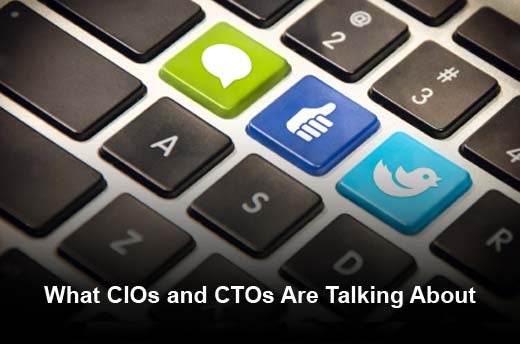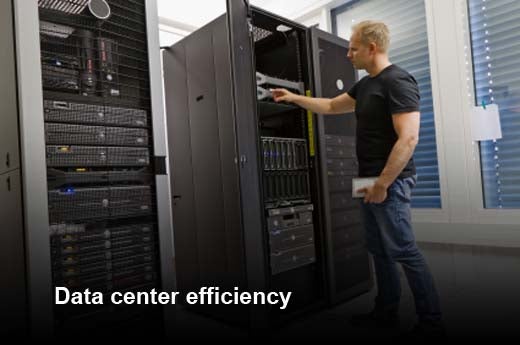When CIOs and CTOs turn to social networks, what are they tech-talking about? Logicalis, an international IT solutions and managed services provider, conducted its fourth annual “Top 10 Tech Trends to Watch” study in December 2012 to find out. The study, which analyzes CIOs’ and CTOs’ social media conversations, helped Logicalis determine the important buzzwords and trends on top IT execs’ minds. Least surprising was the experts’ in-depth discussions about the cloud. Most surprising was the fact that two of the top 10 topics included in-depth discussions about managed services.
“There’s no better way to find out what’s on customers’ minds than to tap into their social media buzz and hear just what they’re talking about,” says Lisa Dreher, vice president of marketing at Logicalis. “Hearing first-hand what topics and concerns CIOs and CTOs are posting in blogs, forums, Facebook and Twitter gives us critical information that we can use to tailor our services to meet their needs. It’s something every company should do at periodic intervals throughout the year, but particularly as the year winds down. End-of-year discussions like these indicate clear trends that can drive innovation.”
Click through for the top 10 IT trends CIOs and CTOs are talking about for 2013, as identified by Logicalis.
No top-10 list about technology would be complete without including the cloud today. But, in the case of CIOs and CTOs and what they’re chatting about, there were a host of critical sub-topics that included managed services for the cloud, the rising importance of hybrid clouds, moving applications to the cloud, and the ongoing debate over private versus public clouds.
Gift-giving over the holidays included an array of techno-devices that will surely make their way into corporate environments. CIOs and CTOs, bracing for the influx of new gadgetry and the impact of that wide assortment of devices on corporate IT systems and security, were talking about mobility with increasing fervor toward the end of 2012, making the bring-your-own-device (BYOD) movement and its associated management and security issues top-of-mind among social media conversations. “Logicalis commissioned a significant BYOD study in late 2012 that showed the U.S. is ahead of other countries in asking employees to sign BYOD agreements, something that CIOs and CTOs are surely discussing now, at the start of a new year,” says Mark Kelly, Logicalis vice president of communication & collaboration.
There’s a reason the word security contains “IT.” From the impact of BYOD to the possibility of data loss due to super storms and other disasters, CIOs and CTOs tasked with keeping their companies’ data secure – both physically and systematically – have had plenty to talk about.
Managing a data center is hard enough from a technical perspective, but the asset and contract management that necessarily goes with it adds burdens that IT execs are beginning to realize can be effectively outsourced.
When it comes to data-intensive operations, IT pros are faced with an array of challenges from meeting peak demands for computing horsepower to how to store all the data created.
Not only is social media a convenient way to tap into the thoughts and opinions of colleagues, but it’s also becoming “the world’s fastest, largest and most accurate focus group,” Dreher says. “CIOs and CTOs are clearly learning to tap these resources to see what IT trends they need to plan for and to find out what strategies their peers have employed that they too might want to adopt.”
Running an efficient data center without unnecessary redundancies and wasted computing power is a top priority for IT pros today. Knowing this, Logicalis hosted a five-part series of discussions about data center efficiency with technology execs focused on key issues like data center optimization, cloud computing, sunsetting old IT assets, network rationalization, and managed services in late 2012.
Change is happening every day and a new normal has to be developed. With data centers at the heart of most corporations, CIOs and CTOs have to re-think end-user computing, modernize application development and evolve their infrastructure before the need for the services and solutions they’re creating even exists.
Two areas of surprise in this year’s study included the increase in discussions about vendor management and about outsourcing. Top IT pros are beginning to see the advantages of doing what makes them a specialist in-house, and turning over the reins for more mundane tasks to an experienced third party’s managed services team, freeing both time and resources to focus on more strategic technology projects.
As corporations rely increasingly more on their data and information, storage discussions among the technology experts supporting these companies naturally included everything from storage requirements to the solutions needed to meet those data management requirements.













